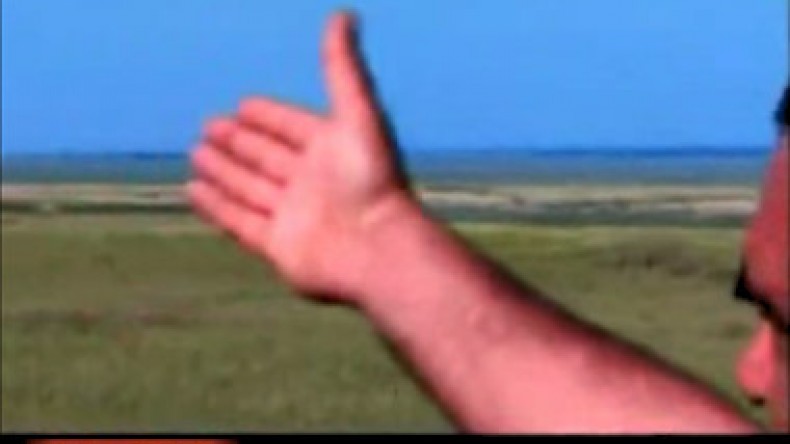
Maragha: 21st anniversary of inhuman and barbaric massacre committed by Azerbaijani militants in Armenian village
On April 10, in 1992, after a three-hour artillery preparation, regular army units of Azerbaijan invaded Maragha, the peaceful village of Karabakh, from Azerbaijani village Mir-Bashir (now Tartar). About 100 people became the victims of the aggression, they were mostly women, children and aged people. Dozens of people were taken as hostage, some of them were later exchanged, but the fate of many of them is still unknown. After almost two weeks, on April 22-23, Maragha suffered another attack, being returned to their native ashes the people were forced to leave their village forever.
Documentary film “Maragha, April 10, in 1992” highlighted a number of facts that previously remained in shadows, but were extremely important, facts that prove that "modern Golgotha," as Maragha tragedy was called by Baroness Caroline Cox, was not the only tragic page of Karabakh war. Azerbaijan had several reasons for its desire of getting that village at all costs, the most important of which was its oil interests and aggressive Armenophobia of the Azerbaijani authorities.
The peaceful population of the Armenian village Maragha was sacrificed to global fuel and energy interests just because the village was in an area which produced valuable hydrocarbons - the so-called "white oil". Perhaps it was because of these global interests of Azerbaijan and also other major powers that Maragha was not liberated, although the Armenian side was ready to do this just a few days before signing the Bishkek Protocol on cease-fire in the conflict zone in May 1994.
The second most important factor that played a fateful role in the destiny of the inhabitants of Maragha, became the aggressive Armenophobia as a basis of the state ideology of Azerbaijani government, since its creation in 1918, up to this day. Azerbaijani OMON detachments, which entered the village only due to the bribed officer-tankmen of former Soviet army, had another purpose besides occupying Maragha, it was to massacre the Armenians in most cruel, inhuman and barbaric methods. It’s not by chance that the eyewitnesses say that in the ranks of the Azerbaijani military units there were special people, armed with scimitar - the main weapon of Turkish hangmen which they used during the Armenian Genocide in the early 20th century. Their task was not simply to kill, but to slaughter, decapitate, dismember and to leave cross-shaped wounds on both the dead bodies and on those the still alive.
According to the villagers, Maragha was especially massively attacked on February 26, in 1992, however the attack was repulsed by the self-defense detachments. Eyewitness of these events V. Gabrielyan says that at 11:00am they started to gather the bodies. "One of them had his throat cut, the other was burnt, and it was obvious by looking at the corpse that it was burned alive. People were driven into the clubhouse and burned. They did a lot of things. I had a friend of the same age, they sawed down his head: the concealed eyewitnesses say by doing this they were saying: "You were the head of the water and gave us no water."
Another eyewitness Karine Poghosyan says that by that time her son was three years old and her daughter was a year and four months. "They took them away from me. When they were taking them away I was screaming madly, I do not remember in detail now. We were taken out of the village, dragged down by the street on foot. I remember, I saw our fellow villagers were there - slaughtered, mutilated. I saw several dead bodies."
According to R. Karapetyan, the village was completely destroyed, burned, looted. There were dead bodies here and there: one with a chopped head, another burned, or crushed by a tank. "They had killed a mother and her son, at first they cut the throat of the mother, her son tried to hide himself in the club, however, he also was caught and killed. Many families have been destroyed in this way. They did not even spare the elderly: one of the elderly was crushed by a tank, he was sick and half-blind."
The nature of the actions of Azerbaijani forces leaves no doubt that the massacre that took place on April 10 was planned precisely on February 26, when near Aghdam another offense of gross indecency was committed by Azerbaijan, but this time it was committed against their own countrymen, who had left Khojalu through Humanitarian corridor left open by the Armenians. After shooting the retreating inhabitants of Khojalu in favor of domestic political purposes and trying deal shortly with the civilians of Maragha under the guise of "Khojalu", the political forces of Azerbaijan pursued one strategic objective, that is discrediting the centuries-old image and reputation of the Armenians as a carrier of world’s civilization and the spread of Armenophobia in the world.
The video footage posted on the Youtube, depicting the wild orgy held in Maragha on April 10, in 1992, shows the true face of the Azerbaijani army, celebrating the "victory" over defenseless old men, women and children.
Newsfeed
Videos






























